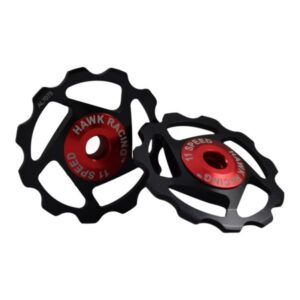Sure, you have fun riding your bike in your local area and on your familiar routes. However, when you travel, you might naturally want to take your bike with you, especially if it’s a cycling vacation. However, traveling with your expensive bike isn’t easy. It takes some advanced planning to make sure it is protected during transit. The same is true no matter if you’re traveling by car, RV, or even by airplane. Here are some things to keep in mind.
Discover How to Transport It
The first step is to determine how to transport it. If you are traveling by car and the distance is on a shorter side, you can absolutely use your car rack. However, you might want to rethink this for long distances, and you’ll definitely need a better option for airplane travel. For these situations, you will need a transport case – but you need to find the right one! Hard cases provide superior protection against impacts and pressure changes, ensuring your bike reaches its destination unscathed. When choosing a case, look for features like secure locking mechanisms, sturdy handles, and sufficient padding inside. Additionally, consider cases with built-in wheels for easier maneuverability through airports or train stations.
Packing the Bike
If you do travel with your bike in a hard case, you will need to disassemble it properly to offer it extra protection. Start by removing the pedals, wheels, and saddle. Depending on your case or bag size, you may also need to remove the handlebars. When disassembling your bike, keep all the screws and small parts in a separate bag to avoid losing them.
Use foam padding, bubble wrap, or special bike protection kits to wrap each part of your bike, focusing on areas prone to scratches or dents. Secure loose items, such as the handlebars and wheels, with straps to prevent them from moving around inside the case. Padding between components will help avoid damage from parts pressing against each other during transport.
Found Out the Bike Policy if Flying
If you’re flying, it’s essential to familiarize yourself with the airline’s policy on bicycles ahead of time. Policies can vary significantly, with some airlines treating bikes as regular checked baggage, while others may require a special handling fee due to their size and weight.
Before booking your flight, check the airline’s website for specific instructions on how to prepare, pack, and check-in your bike. Be aware of any weight or size limitations and additional fees to avoid any surprises at the airport. It’s also a good idea to call the airline directly for clarification if their policy isn’t clear.
Consider Getting Insurance
Traveling with an expensive bike can be risky, especially if you frequently participate in events or races abroad. To mitigate the financial risk associated with potential damage or loss, consider purchasing travel insurance that specifically covers sports equipment. Some home insurance policies may also offer coverage for personal belongings, including bikes, while traveling.
Traveling with your bike allows you to explore new landscapes while enjoying your favorite hobby. It takes some advance planning and preparation to travel with your bike safely, but it will all be worth it!
Share this post:



